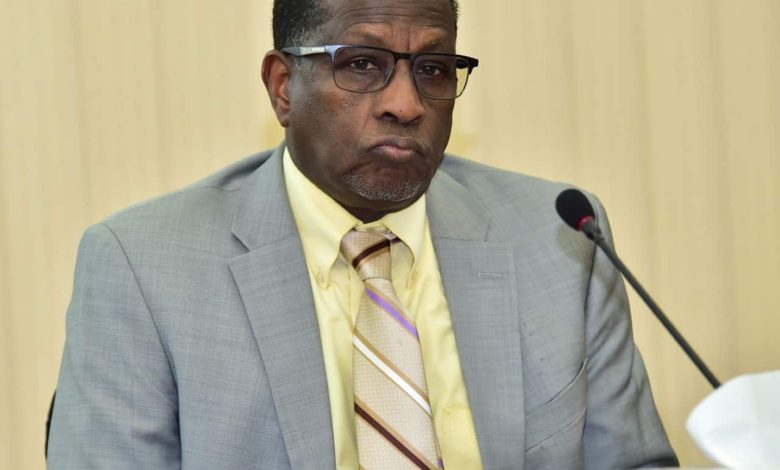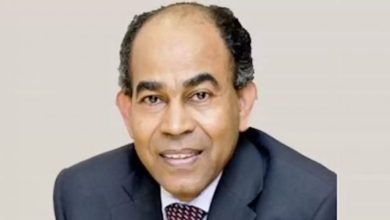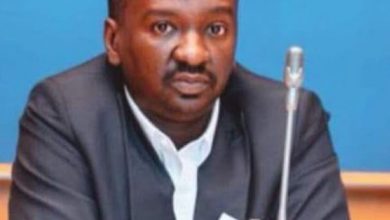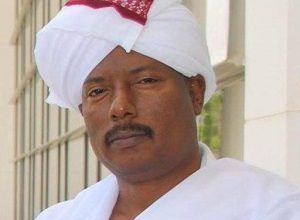The Big Losing Deal in Sudan Dosseir (1-7)

Al-Tijani Abdel Qader Hamid
July 21, 2024
Introduction:
There is no doubt that the current war (April 15, 2023-) in which thousands of innocent Sudanese civilians were killed, and millions of them were displaced from their homes, after their property was stolen and their sanctities were violated, will raise burning questions for each one of them; questions not only related to political loyalties and household looting, but also related to existence – the existence of man on the map of time, and the existence of the homeland on the map of place. Since this war took many of them by surprise, they found themselves like the owners of a hijacked ship, asking each other: Who are these pirates and what do they want?
Did they sneak into the cockpit with their own independent cunning, or do they have “helpers” among us? Do they want to repair the ship or seize it?
Are they working on their own behalf, or are there “big pirates” behind them who take every ship by force? Should we flee and leave the ship to them, or fight them on it, or “coexist” with them, or what should we do? Questions that take hold of each other and seek answers.
The answers – whatever they may be – do not represent a solution to the problem, but they pave the way for understanding it. Unless the problem is understood correctly, its components and network of relationships are identified, the proposed solutions and hasty initiatives may only be useful in terms of alleviating the current pain, but they will not treat the underlying disease that is causing that pain. In this article, we try to present our own “understanding” of what happened, based on the information available to us. Then we conclude with what may seem to us to be “conclusions” in light of that understanding. It is important to begin by reminding the reader that we do not claim to have discovered new information or a document that was not known to them.
All we seek is to link the available information and documents in a logical way that makes us see that information in a new light. That is, we seek to provide an “interpretive vision” that organizes a lot of scattered information within its framework, through which we obtain appropriate answers to many pending questions, and we may then arrive at possible solutions. Although the article is long and academic in nature, we preferred to publish it – in parts – on this page out of respect for our followers, friends who are interested in what we write.
The main thesis of the article consists of two parts:
The first: that most of the organized Sudanese forces (political and economic) have left the circles of influence, and their place has been taken by major actors (in the regional and international environment) who have been sharing the Sudan file since the last years of the Salvation, but their presence has increased with the events of the popular revolution that overthrew the regime.
As for the second part: that these external forces are not working to restore a lost democratic system, or to build solid civil or military institutions, or to partner with influential national figures. All they aim for is for the leadership of the state in post-revolution Sudan to be transferred to what is known in social psychology as “situational” figures that can be controlled by major actors to achieve their interests.
The situational figure, or situational leader, is a person who does not act according to strong internal convictions, or a coherent intellectual vision, but rather assumes the “role” imposed by the surrounding situations , and makes or abandons his decisions according to the constraints of the surrounding environment. (It is worth noting that in 1972, a psychologist conducted a scientific experiment to verify the validity of this concept, known as the Stanford Prisoner Experiment, where a number of ordinary people were chosen to volunteer to play the role of prisoners, and others were asked to play the role of guards.
It was noted after only two weeks that the “guards” had become rough, and one of them began to play the real role of the jailer, abusing his authority, using excessive force, and completely deviating from the scenario, which caused the person supervising the experiment to lose control over the volunteers and call the police to break up the clashes.
The conclusion that can be learned from this experiment is that there are ordinary characters, but if they are placed under special situations and forced to play some roles, they may exaggerate in impersonating the prescribed role, and will actually turn into a situational character, and may sometimes deviate from the script and get out of control.)
However, we must differentiate between the “pragmatic” character who has an intrinsic vision and ability, but factors in the external environment weigh heavily on him, so he sometimes obeys them – despite being forced – and at other times he obeys them.
This is what makes the difference between him and another type of people who only have a superlative ability to play roles, as one of them assumes the role assigned to him and represents it in the best possible way, then under other situations plays the opposite role.
Such empty characters confuse the political scene, as observers do not realize whether the situations and scenes that are taking place before their eyes are real situations or a kind of acting?
Are those sitting in the cockpit pragmatic leaders who overcome the situations , or “circumstantial” leaders who play drawn roles and move with strings from outside the stage? Will they continue to act or will they go off script, making it difficult to control them? It is not an exaggeration to say that contemporary Sudanese politics is controlled – before and after the war – by circumstantial leaders. This description applies to the three parties (Ibn Auf, Burhan and Hemedti), as it applies to their fellow civilian leaders.
However, in this article, we would like to complete our previous study of one of these figures, Lt. Gen. Hemeti, for no other reason than that (first) he has reached a level of role-playing and moving events that others have not reached – despite the characteristics of simplicity, primitiveness, and ignorance that he possesses; and (second) because external forces (regional and international) have found in him a model of the “circumstantial” character that can move secondary figures internally, as they can move themselves from the outside – without feeling embarrassed. In this article, we would like to investigate – with deliberate focus – the role that these forces played in moving Lt. Gen. Hemeti according to their purposes, and the role that Lt.Gen.Hemeti played in moving the facts of Sudanese politics in the last five years (from the fall of the Salvation Government in April 2019 to the outbreak of the current war in April 2023). Our purpose is not to stop at this event or that, but rather our purpose (as we indicated earlier) is to search for the points of connection between them, and to identify the general direction in which they are heading.
Our approach will be: question/assume/verify; that is, we ask questions that we deem necessary, assume an answer that we deem logical, and then try to verify whether the available facts support or refute the answer we have assumed.
After some contemplation, we were able to ask the following ten questions:
1- Did the “Group of Four” play a role in the rise of Lt. Gen. Hemeti to the position of the second man in the Sovereignty Council TSC?
2- Was Lt. Gen. Hemeti lured – or deceived – to play (he and his forces) a role in dispersing the sit-in at the General Command?
3- Has the sit-in dispersal file become a pressure card used by the “Freedom Forces” and the regional and international powers (the Group of Four) to threaten and blackmail Lt. Gen. Hemeti?
4- Was the threat of the sit-in dispersal file one of the reasons that made Lt.Gen. Hemeti end the partnership with the “Freedom Forces” and plot the coup against it on October 25, 2020?
5- Was the coup plotted in light of “understandings” with some international powers (the Russian government, for example?)
6- Was Lt. Gen. Hemeti’s rapprochement with Russia (and his visit to it at the invitation of President Putin), and his distancing from the “Group of Four” what made the Group of Four raise the “red card” in Hemeti’s face, and use the sit-in dispersal file to threaten and blackmail him for the second time?
7- Did Lt. Gen. Hemeti accept – under threat and temptation – to enter into a new deal with the Group of Four and its allies inside (the Forces of Freedom and Change)?
8- What is the nature of that deal – if it existed? Did it include a final distancing from Russia and its allies in the region (Iran/China/Turkey)? Did it include – in return – a firm promise to close the sit-in dispersal file?
And that the supreme military authority in Sudan would revert to Lt. Gen. Hemeti and his forces, while political authority would revert to the Forces of Freedom and Change (FFC)?
9- After the disastrous war in which the Rapid Support Forces RSF were involved, and the diminished role that Lt.Gen. Hemeti could play (politically and militarily), has the strategy of the Group of Four changed accordingly, and is there a trend towards a “gradual disengagement” from Hemeti and his forces?
10- What are the most important conclusions that could represent approaches to a solution?



